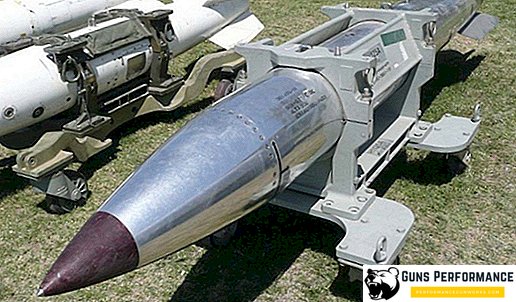Currently, pollution problems have reached an alarming scale, which is regularly discussed by the media and the scientific community. Many scientists over the past 20 years inevitably predict the death of the Earth, if not to take radical measures to save it. Thanks to the activities of enthusiasts and organizations, many books and scientific works have been written about pollution and their types, and studies have been conducted on the effects of environmental disasters in certain regions of the world.
However, the problem is not solved, every year there are new types of chemical pollution, which were not known 5-10 years ago.
The history of the first environmental problems
Although global pollution problems on Earth began to be seriously affected only in the last few decades, these troubles occurred during the Stone Age. The ancient people in the course of their life seriously influenced the area in which they lived:
- The tribes gathered berries, mushrooms, wild-growing vegetables and fruits, depriving animals of their usual diet and forcing them to migrate to another locality;
- The improvement of hunting weapons led to the fact that the remaining animals were ruthlessly exterminated;
- The development of cattle breeding and farming led to the barbarous use of land, the forests began to burn.
The development of human society was accompanied by new problems in people's lives, the emergence of mines forever changed parts of the terrestrial landscape, and the drainage of lakes and swamps led to climate change.
The industrial revolution was marked by a new wave of pollution - wastewater began to poison all living things in rivers and lakes. The expansion of the technosphere was accompanied by the construction of new plants and an increase in the number of oil spills in the seas and oceans. Some scientists call the emergence of man on earth the beginning of an ecological catastrophe.
Classification of natural pollution

Currently, environmental pollution is classified into several types:
- Biological - in this case, the source of the problem are living organisms. Most often they appear in water bodies due to direct human activity or for a number of other related reasons;
- Physical - this type includes thermal, radiation, noise and other pollution;
- Chemical - is an increase in the content of hazardous metals and other substances in the environment;
- Mechanical - pollution of the biosphere by waste and other debris.
Often, several types of pollution accompany each other, which gives environmental disasters the scale and complexity of the solution. According to the type of occurrence, environmental problems are divided into artificial (man-made) and natural (natural).
Anthropogenic caused by human activity, their main sources are:
- Accelerated industrialization of society;
- The invention of the internal combustion engine and the increasing number of cars in the XX-XXI centuries;
- Growth in world population;
- Emissions of harmful substances and their compounds into the atmosphere;
- Treating fields with pesticides, then falling into the water;
- Nuclear explosions;
- Exploitation and predatory extraction of natural resources;
- Construction of roads, dams and buildings.
The deterioration of the environmental situation that occur without human intervention (natural):
- Volcanic eruptions;
- Forest fires;
- Sandstorms;
- Decomposition of organic matter.
Natural pollution is not as dangerous as artificial pollution, it can affect the environment for a long time, but can be regenerated.
The main types of environmental pollutants

The main objects of pollution are:
- Atmosphere;
- Water resources;
- The soil.
The simplest example of a toxic substance of natural origin is carbon monoxide (carbon monoxide). The main danger of this compound for humans is that it is absorbed by the body instead of oxygen, causing:
- Headache;
- Cardiopalmus;
- Shortness of breath;
- Dizziness;
- Causes poisoning and can even lead to death.
There are more insidious pollutants, which in their pure form are not dangerous, but react with other compounds and turn into poisons. For example, nitrogen and sulfur oxides released from fossil fuels during combustion rise to the atmosphere and mix with water vapor there. This is how acid rains are formed, leading to the death of aquatic animals and organisms, some populations of land plants.
Consequences of environmental disasters
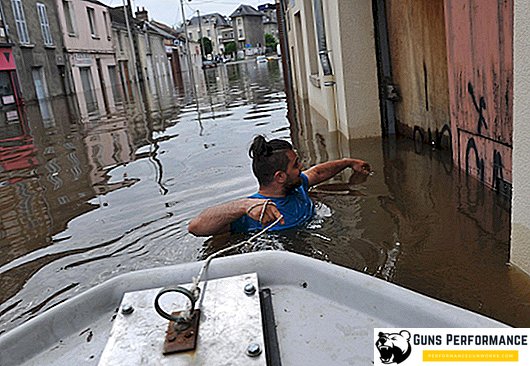
A huge number of cars, increasing from year to year, led to increased CO2 emissions into the atmosphere. Major cities are in constant smog, affecting not only the human body, but also the process of photosynthesis of plants. Acid rain exacerbates this problem, and oil spills cause the death of entire animal populations.
Decreased air quality triggers an increase in the growth of respiratory diseases, including lung cancer and asthma. Contamination of water leads to exacerbations of skin diseases such as rashes and irritations. Increased noise levels can cause chronic neurosis.
Every day, forests are being cut down on the planet, new enterprises are being built, several species of plants, insects and animals are disappearing, thereby causing irreparable damage to the nature of various continents. In developed countries, protected areas are created by law, but these measures cannot help save the depleted ozone layer of the planet. The increase in CO2 emissions entails the melting of polar glaciers, increasing the level of the seas and oceans and creating a threat to residents of coastal areas. As a result of human activity, more and more barren land appears. The use of insecticides and pesticides destroys the biological balance of microorganisms in the soil, and they die.
Problems with the atmosphere of the Earth
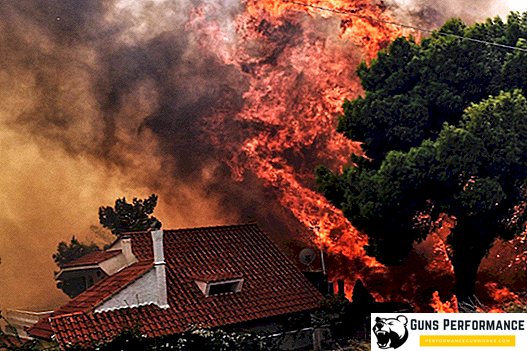
The air envelope of the planet determines the climate and the thermal background of the Earth; it is this one that is able to protect the population from the deadly effects of cosmic radiation and affects the relief formation. The composition of the atmosphere is constantly changing, it is sensitive to human economic activity. The main sources of air pollution are:
- Chemical plants;
- Enterprises of the fuel and energy complex;
- The work of transport.
Heavy metals get into the atmosphere: mercury, lead, copper, chromium, and so on. This type of pollution is constantly present in industrial areas.
Modern power plants are the constant satellite of any city, they emit tons of carbon dioxide into the atmosphere every day, and the few green islands in the settlements are not able to process even a small part of them. The increase in CO2 emissions contributes to a huge number of cars in cities, because of the additives added to the fuel, lead enters the atmosphere. It is for this reason that the temperature changes in large cities - it is always warmer by several degrees.
As a result of human activity on the planet, forest fires occur regularly. The consequences of this type of pollution can be not only obvious, but also hidden: the scorched territory will turn into a desert for several years, and all living organisms will be destroyed.
Soil contamination and possible consequences

The soil is a fertile thin layer of the lithosphere, where various stages of exchange between living and nonliving systems take place. Due to modern agricultural processes, which are aimed at maximizing profit, there are problems associated with the destruction of entire areas of fertile land layers. Frequent plowing leads to the vulnerability of the soil to flooding, winds and salinization, which ultimately causes its erosion. Thanks to the practice of applying fertilizers, pesticides, unnatural compounds for it enter the earth, and the human body is not adapted to products grown using chemicals.
Soil damage is caused by chemical pollution with heavy metals. Lead containing lead into the ground leads to chemical contamination. Heavy metals pollute the earth as a result of ore processing. Car exhausts exacerbate environmental problems. Waste is generated during operation of power plants.
Most of all soils are harmed by radioactive contamination, including:
- Radiation from nuclear waste, often buried not by the rules;
- The consequences of nuclear explosions carried out in third world countries illegally;
- The work of research institutes for the study of atomic energy.
All this is the reason for the ingress of large doses of radiation into the soil, which then enters the human body along with food.
Metals reserves, concentrated in the earth's interior for millions of years, are now being extracted and used. Things and devices made with their use gradually become useless, are thrown away and collected in the upper soil layer. If in ancient times people used only about 18 elements in the earth's crust, now they are all known.
Impact of negative factors on the ecology of water resources
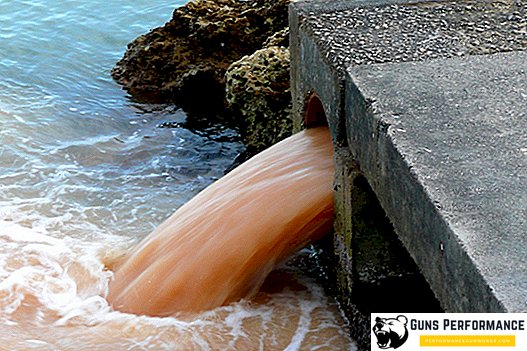
One of the most polluted resources of the modern world is the hydrosphere. Floating bottles, tires, shoes, oil spills - this is just what can be seen with the naked eye. Most of the pollutants are dissolved in water. Despite the fact that nature conservationists consider humans the only source of pollution of rivers and oceans and the cause of the death of aquatic animals, water damage often occurs naturally. For example, as a result of mudflows and floods, magnesium is washed out of the soil, getting into the water bodies, it can cause the sea of fish and other aquatic organisms. As a result of chemical reactions aluminum gets into reservoirs. Volcanoes often provoke thermal pollution of the seas and oceans. But still, natural disasters make up a small percentage of the total number of incidents.
The fault of a person most often gets into the water:
- Pesticides;
- Nitrates, phosphates and other salts;
- Surface active compounds;
- Radioactive isotopes;
- Medications;
- Oil products.
The main sources of water pollutants are:
- Oil platforms;
- Power plants;
- Chemical industry;
- Fish industry complexes;
- Farms and collective farms;
- Sewage drains.
Discharge of household waste into water near settlements inevitably leads to a deterioration in its quality, the population of aquatic organisms is declining, many of them die. Dirty water is the source of most human diseases. As a result of poisoning, all living species suffer, the natural course of natural processes is disturbed.
Many people throw organic residues into reservoirs, arguing that everything natural cannot damage nature. In fact, they provoke decay processes that reduce the amount of oxygen in the water, and aggravate the global problems of environmental pollution.
How can you save the ecosystem?
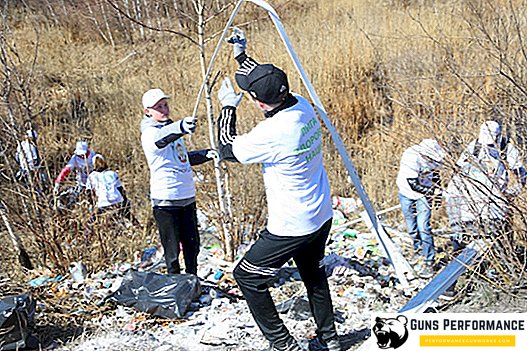
To avoid an ecological catastrophe in the near future, you need to deal with physical types of pollution at the local level. Each country must introduce a number of penalties for enterprises that throw waste into the environment. Old industrial equipment that does not meet international standards should be disposed of. For the introduction of new production technologies involving the installation of multi-level treatment plants, it is necessary to introduce a system of financial incentives. This approach has already proven its viability in some countries.
The search for alternative energy sources will help reduce pollutant emissions. Solar panels, hydrogen fuel should gradually replace outdated technology. More traditional methods of pollution control are:
- The construction of modern treatment systems and facilities;
- Creation of reserves and national parks;
- Increase the number of forests and park areas.
With the development of high technology and the Internet, it has become possible to quickly attract world attention to environmental issues. To combat biological pollution, voluntary groups and groups are created.
Pollution of the atmosphere, soil and water resources is a problem that affects all the inhabitants of the planet Earth. If people do not cease to treat consumer nature, then it will not be possible to avoid a global environmental catastrophe.




